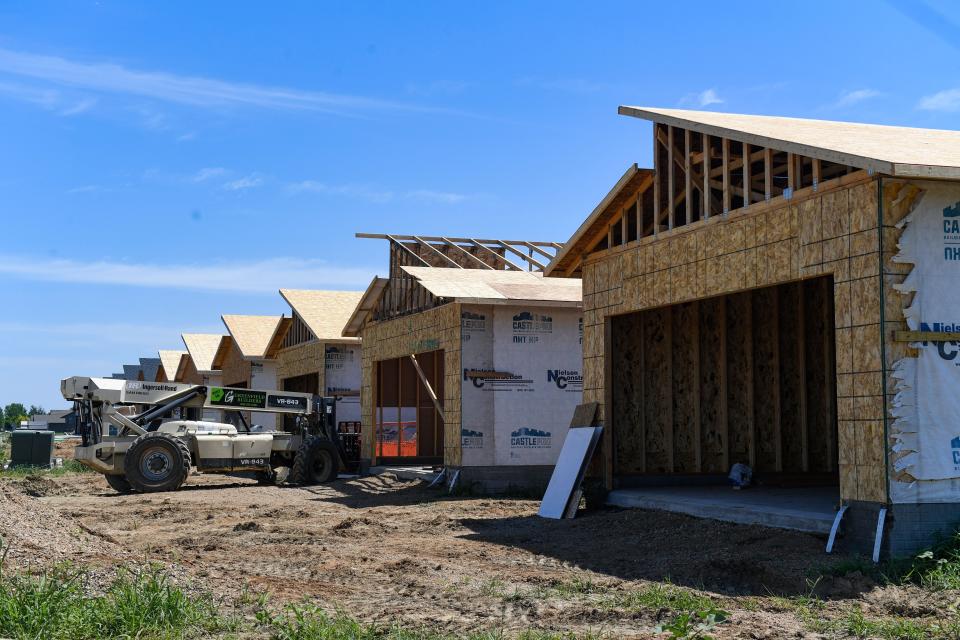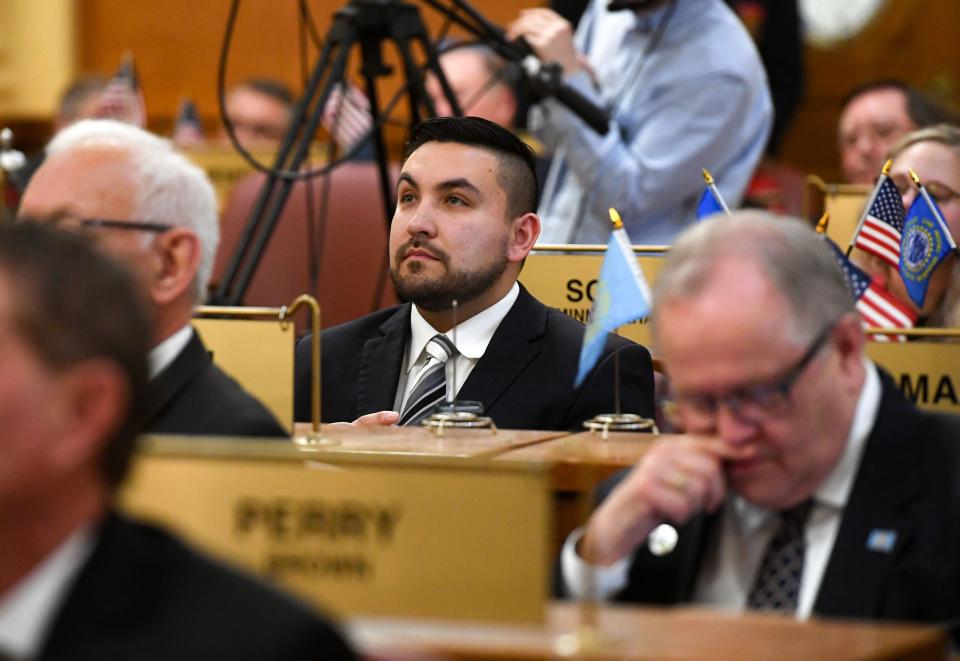South Dakota's tribes cut out of housing infrastructure grant program
The South Dakota Housing Development Authority Board heard public comments Wednesday regarding rules for a loan and grant program that would provide funding for housing infrastructure projects across the state.
However, it looks like the program — which has already been delayed due to the administrative rule process since the bill that created it was signed into law in February — will be unable to help tribal communities secure funding for much-needed housing infrastructure.
That’s because Tuesday, during the board’s regularly scheduled meeting, it was disclosed by the interim executive director of the South Dakota Housing Development Authority, a semi-independent agency that oversees affordable housing in the state, that the public infrastructure will be “owned, maintained or provided by a political subdivision of this state,” according to South Dakota Searchlight.
More: South Dakota's $200M housing development program could be delayed until August
But tribal entities are not considered political subdivisions, due to their sovereign status.
In written testimony, the Cheyenne River Housing Authority, the tribally designated housing entity which administers federal and state funds for affordable housing on the Cheyenne River Reservation, wrote that while it appreciated tribes were included in the eligibility for the program it was concerned about the political subdivision requirement.
“This creates a barrier for Tribes who are currently developing and/or managing infrastructure because in the majority of cases, Tribes or tribally created entities provide and maintain infrastructure on their reservations,” the organization wrote. “It is often that case that a tribal entity is also providing the infrastructure for all residents, both tribal and non-tribal, on a reservation.”
More: SD housing authority grant and loan program on track to be approved by July after delays
The Cheyenne River Housing Authority continued that by not adding tribes to the definition of political subdivision, the program created an “unintended obstacle” for the tribes.

The South Dakota Native Homeownership Coalition, in written testimony, echoed comments made by the Cheyenne River Housing Authority.
'Unintended consequences'
Rep. Tyler Tordsen, R-Sioux Falls, was quick to tweet Tuesday that he was starting to work on legislation to get tribes included in the grant and loan program.
Tordsen told the Argus Leader Wednesday that he and other stakeholders in the program assumed that tribes would be eligible. However, because of the way state law defines public infrastructure and political subdivisions, he and others realized that “we weren't going to be able to find a good loophole or a way to make sure that tribal entities are going to be eligible to go after this.”

He explained that in the past few days, it became apparent that a legislative fix was needed.
“There was no there was no intention of cutting tribes out on this,” Tordsen said. “There's nothing nefarious going on, which is really good. Everybody's on the same page. It's just one of those unintended consequences.”
Chas Olson, the interim director of SDHDA said Wednesday during the public comment period that he believed there could be a workaround for tribes.
“The wording is the definition of public infrastructure does allow for a kind of a workaround. It does say that the public infrastructure must be owned or provided by,” he said, explaining the city or county, acting as the political subdivision, could apply for the fund, get the infrastructure built and then turn long term ownership over to the tribes.
More: South Dakota governor says 'houses would be built' if legislature had done things her way
Tordsen was hesitant about the proposed workaround, saying it would be tough to find a city or county in Indian Country who would be willing to trade ownership of public infrastructure.
“I think they would be reluctant to take on the added infrastructure that would be created by tribes, if it's a tribal housing project, and then vice versa, tribes wanting to, or their willingness, to hand over ownership of certain infrastructure pieces,” Tordsen said, adding he remained hopeful those kinds of partnerships could occur.
Olson, after acknowledging that some kind of legislative fix to make tribal entities eligible most likely needed to happen, said he had been asked about setting aside a certain percentage of the funding for tribes until the language could be figured out, but he didn’t believe that would be possible.
“There’s really no guarantee that there will be a legislative fix,” Olson said, explaining SDHDA felt it was out of their authority to set aside a certain amount of funds.
The grant and loan program will now go in front of the lawmakers who make up the Interim Rules Review committee in June. If the rules for the program are approved, program applications could start going out as soon as July.
This article originally appeared on Sioux Falls Argus Leader: Tribes cut out of SD housing infrastructure grant program

